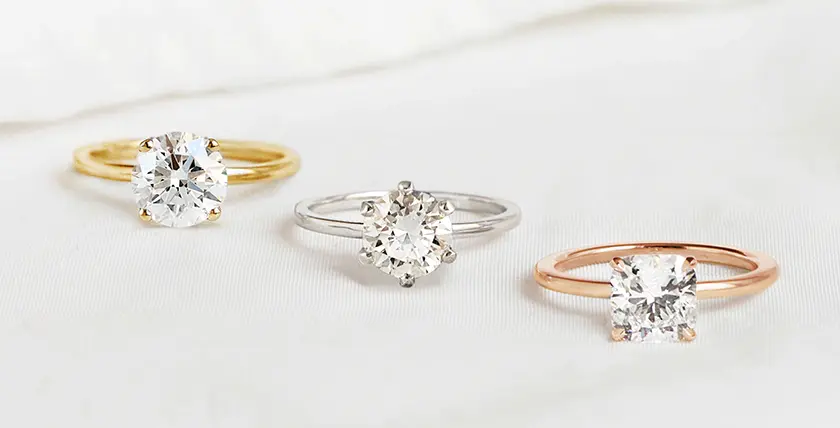How Artificial Intelligence Is Redefining the Jewelry Experience: From Bench to Browser

On a humid afternoon in New York’s Diamond District, a master setter peers through a loupe and nudges a four-prong head ever so slightly. Two blocks away, a data scientist refreshes a TensorBoard dashboard and watches a loss curve fall. These scenes feel worlds apart, yet they are now chapters of the same story. the collision of high jewelry and high tech. Artificial intelligence (AI) has slipped quietly onto the jeweler’s bench, into the showroom, and even into post-sale service. In doing so, it is cutting waste, amplifying creativity, and giving shoppers a buying journey that feels as bespoke as the pieces they take home.
According to a 2024 McKinsey report, global fine-jewelry sales attributed to AI-driven features (from generative design to virtual try-on) could exceed 35 billion dollars by 2030. While fashion brands have embraced automation for years, jewelers face different stakes, microscopic tolerances, legacy craftsmanship, and emotional purchases that often mark once-in-a-lifetime milestones. Those very stakes make the industry ripe for an intelligence upgrade.
This article explores five pivotal touchpoints where AI reshapes both craft and commerce, focusing on engagement rings especially solitaire settings, a timeless style that reveals the full impact of subtle design tweaks. Along the way we will examine real-world use cases, demystify the tech stacks behind them, and peek at how secure cloud storage for business keeps trade secrets safe.
Table of Contents
Generative Design Turns Sketches Into Settings
How It Works
Generative models most commonly diffusion or GAN architectures are trained on tens of thousands of finished pieces plus the gemstone parameters that produced them. Feed the model a constraint set stone size, band width, prong count, metal purity and it returns hundreds of viable shank and head combinations in seconds. Designers still curate the final shortlist, but the dreaded blank-canvas paralysis vanishes.
Practical Payoffs
- Speed to prototype: What once took an afternoon in Rhino or MatrixGold now happens before your espresso cools.
- Reduced metal waste: Simulation of material stress under real-world wear lets brands right-size prongs or galleries before any casting grain is melted.
- Hyper-personalization: Couples who want matching rings with subtle differences say, filigree that echoes a family crest get options that feel hand-drawn but emerge from math.

A Real-World Example: Brand Flawless Fine Jewelry
When discussing timeless simplicity, nothing beats solitaire engagement rings. Experienced buyers who crave a clean silhouette still welcome fresh twists, a hidden halo, a knife-edge band, or cathedral arches that lift the stone. Brands like Flawless Fine Jewelry use AI to generate variations that respect the classic look while injecting micro-details modern wearers love. Explore their latest classic solitaire engagement rings and you will notice nuances tapered shoulders, floating baskets born from generative design rather than guesswork.
Virtual Try-On: Putting Pixels on Your Finger
Computer Vision Meets AR
Modern virtual try-on relies on convolutional neural networks trained to segment hands and individual digits with high accuracy even when nails are painted or lighting is dim. Once the network maps finger topology, an AR engine renders the 3D model of a ring in real time, accounting for occlusion as your fingers bend.
Why Shoppers Love It
- Confidence boost: A 2025 Shopify study showed virtual try-on increases conversion on high-ticket jewelry by 58 percent.
- Ten-second fit check: Customers swap carat sizes or metal colors on the fly, a process that would demand multiple physical samples in-store.
- Social-proof loop: The share button is never far away, friends weigh in instantly, accelerating the path to “yes.”
Behind the Curtain
Low-latency performance is crucial. Render assets HDRI environments, gemstone meshes, metal shaders often sit on a CDN. Some retailers serve them from edge nodes optimized by cloud storage for business solutions see our in-depth review at ncse.info. Secure, geo-redundant storage keeps virtual try-on smooth whether a bride-to-be is browsing in Boston or Boise.
Data-Driven Trend Forecasting: From Mood Boards to Machine Learning
Jewelry has always danced with fashion, but its product cycles lag apparel. new ring collections might launch twice a year, not six times. A bad trend read can leave a brand stuck with slow-moving inventory until the next Valentine season. AI thrives on exactly this kind of signal.
Inputs That Matter
- Macro indicators: Gold spot price, wedding-season seasonality, Instagram posts tagged #ringbox.
- Micro signals: Heat-map clicks on product pages, abandoned-cart metadata, anonymized wrist-size distribution captured by virtual try-on.
Combine these into an XGBoost model and you have a forward indicator of which stone shapes, band widths, or metal mixes will spike three months from now.
Outcome: Smarter Merchandising
When last year’s oval-cut craze started cooling, predictive dashboards flashed yellow, prompting one DTC brand to shift marketing spend toward emerald cuts right before the micro-trend spiked on TikTok. They cleared Q3 inventory 31 percent faster than the prior year.
Assurance and Storytelling Through Blockchain
Diamonds can carry baggage. conflict-zone sourcing, undisclosed lab-grown stones, chain-of-custody gaps. AI cannot fix ethics, but it can weave data from miners, cutters, and setters into an immutable ledger.
NFT-Backed Certificates
Instead of a paper certificate in a velvet folder, buyers receive a mint-on-purchase non-fungible token tied to the stone’s report, cut angles, fluorescence grade, and setting serial number. Smart contracts handle transfer if the ring is resold.
AI-Enhanced Verification
Computer-vision models now detect subtle growth patterns unique to CVD or HPHT lab diamonds, flagging stones that slip through manual grading. Coupled with blockchain, mislabeling drops dramatically and rebuilds consumer trust.
Operations: The Quiet Hero of Cloud and Edge
Artistry grabs headlines, but logistics image pipelines, order routing, secure backups make or break customer delight. AI-driven workflows are data-hungry, and losing that data is not an option.
CAD to Cloud in One Click
High-resolution renders exceed 200 MB each. Instead of versioning massive STL files locally, designers now push straight to encrypted object storage. A versioned bucket with intelligent tiering keeps rarely accessed prototypes cheap while hot assets sit on NVMe-backed edge nodes for near-instant virtual-try-on retrieval.
Interested in the nuts and bolts? See our guide to cloud storage for business for how redundancy settings and lifecycle policies translate into real-world uptime.
AI-Ready Data Lakes
Customer embeddings, 3D meshes, and sales metadata feed nightly into Snowflake or BigQuery. Because the shape of this data changes often, schema-on-read strategies beat rigid relational tables. Plan for columnar file formats (Parquet, ORC) and partition pruning so future queries stay lightning-fast.
Conclusion
Ask any bench jeweler why they chose the trade and most will mention romance, permanence, or the thrill of turning molten metal into heirlooms. They rarely cite convolutional kernels or gradient descent, yet the line between these worlds is disappearing.
AI is not replacing human taste or emotion, it is amplifying them. Generative design unlocks creativity at unprecedented speed. Virtual try-on erases geographic barriers. Predictive models turn artisans into trendsetters, not followers. Blockchain flips opacity into transparency, and robust cloud architecture keeps the whole process humming quietly in the background.
For shoppers, the payoff is a smoother journey, no more guess-and-hope sizing, no more “which cut is trending?” anxiety, and no more fear of counterfeits. For jewelers, it is better margins, quicker pivots, and deeper insight into what sparkles next.
Ten years from now, hand-engraved filigree will still draw a gasp under dim restaurant lights. The difference is that the path to that moment will be paved with algorithms quiet, invisible, yet invaluable.



